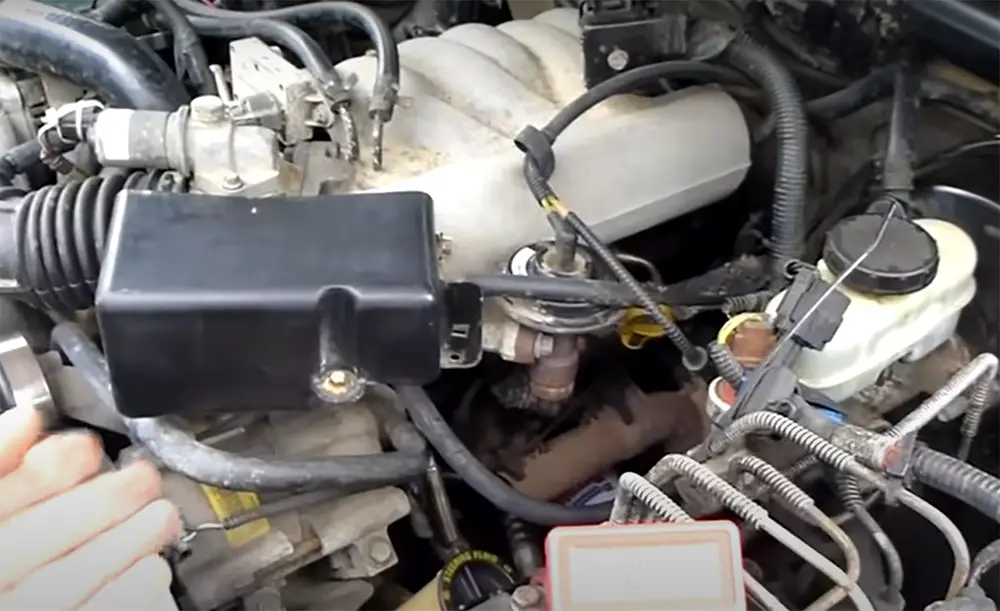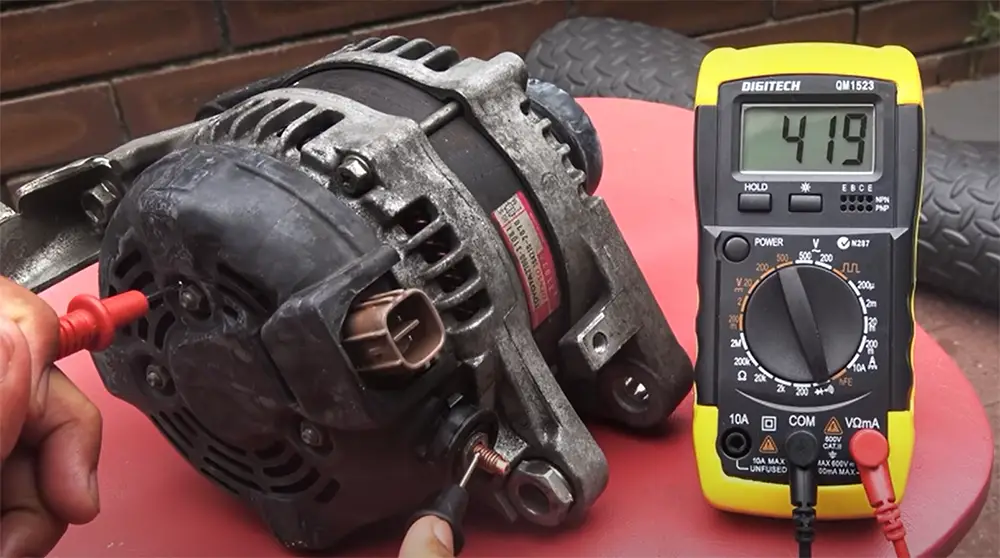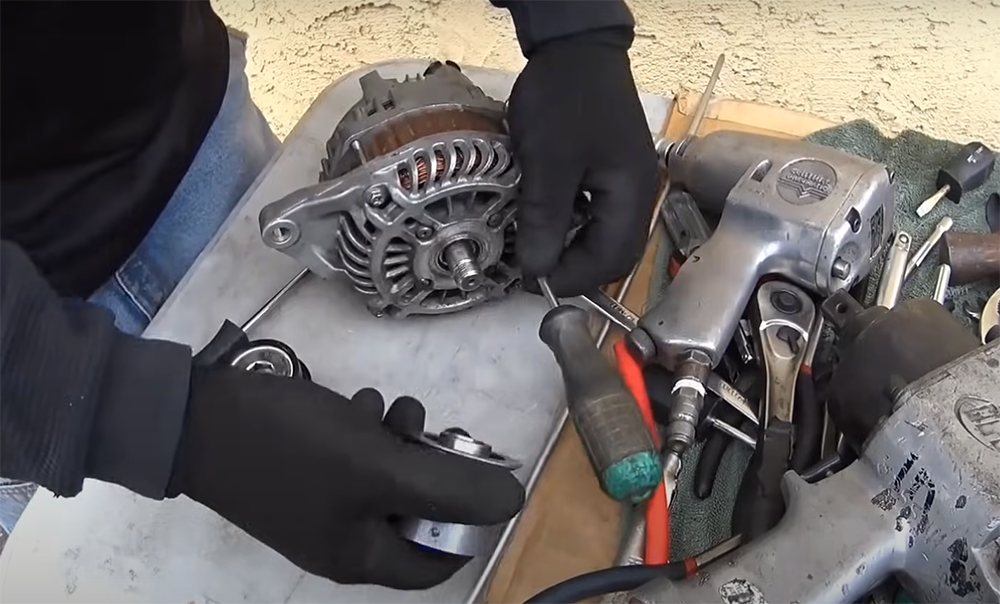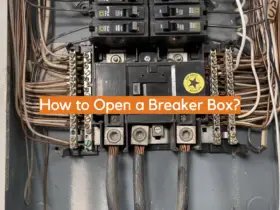Testing the alternator on your car is an important step in keeping your vehicle running smoothly. If you notice that your car is starting to struggle to turn over, or if the battery seems to be losing power more quickly than usual, it may be time to test the alternator. In most cases, you will need a multimeter in order to complete this task. However, there are a few methods that can be used without this tool. In this article, we will discuss these methods and provide tips on how to test alternators without a multimeter.
What is an Alternator
An alternator is a device that generates alternating current (AC). It is an electrical device that converts mechanical energy into AC power. Alternators are used in a variety of applications, including automotive, marine, and aircraft.
The most common type of alternator is the automotive alternator. Automotive alternators are used to charge the battery and power the electrical system of a vehicle. They are typically belt-driven by the engine.
Alternators work by using electromagnetism to convert mechanical energy into AC power. The Alternator consists of three main parts: the stator, rotor, and diode rectifier assembly.

The stator is a stationary part of the alternator that contains winding coils of wire. The rotor is a rotating part of the alternator that contains a metal armature. The diode rectifier assembly consists of diodes that convert AC into DC power. [1], [2]
Why Testing an Alternators is Important
That’s why testing an alternator is important to ensure that it is working properly. Alternators can fail for a variety of reasons, such as worn bearings, bad diodes, or loose belts.
There are a few different ways to test an alternator, but the most common way is with a multimeter. A multimeter is an electrical testing device that can measure voltage, current, and resistance.
But what if you’re in a pinch and don’t have a multimeter on hand? Luckily, you can test alternator without a multimeter. [1], [2], [3]
What are Signs of a Bad Alternator
Alternators are intended to last the lifetime of a vehicle, but they can go bad over time. Before we get into how to test your alternator without a multimeter, it’s important to know the signs of a failing alternator. This way, you can diagnose the problem before it gets worse.
Sudden noises
If you start hearing strange noises coming from the engine bay, it’s a good indication that something is wrong with the alternator. The most common noise is a squealing noise that gets louder as the engine speed increases. This indicates that the alternator belt is loose or worn and needs to be replaced.

Other noises can include grinding, growling, or rattling. These usually indicate that the bearings inside the alternator are going bad and need to be replaced.
Burning smell coming from the engine bay
Burning smells are never a good sign, especially when it’s coming from your engine bay. If you notice a burning smell coming from under the hood, it could be a sign of a bad alternator.
Alternators contain diodes that convert AC into DC power. If these diodes fail, they can overheat and cause a burning smell coming from the engine bay.
The engine doesn’t start
If your alternator is going bad, one of the first signs you’ll notice is that the engine won’t start. This is because the alternator powers the electrical system, and if it’s not working properly, the electrical system will not be able to start the engine. And when you turn the key, you may only hear a clicking noise. This is because the battery doesn’t have enough power to crank the engine over.
Battery dies when accessories are turned on
If your battery dies when you turn on the headlights or other accessories, it could be a sign of a failing alternator. This is because the alternator powers the electrical system and charges the battery when the engine is running. When the alternator fails, it can no longer provide power to the electrical system or charge the battery. This will cause the battery to eventually die.
Dim headlamps or flickering dashboard lights
Dim headlamps or flickering dashboard lights can also be a sign of a bad alternator. This is because the alternator powers the electrical system, and if it’s not working properly, the electrical system will not be able to provide power to the headlamps or dashboard lights. Or any electronics in your car at all. [1], [2], [3], [4]
Testing an Alternator Manually
Now that we’ve gone over some of the signs of a bad alternator, let’s talk about how to actually test one without a multimeter. While a multimeter is the most accurate way to test an alternator, there is a way to test it manually.

Rev the engine up to 2000 RPM and turn all the electrics on
First, you’ll need to rev the engine up to 2000 RPM and turn on all the electrics in your car. This includes the headlights, windshield wipers, radio, heater, air conditioner, etc.
Doing this will help draw more power from the alternator and make it easier to test.
Observe the voltage gauge
If your car has a voltage gauge, observe it while revving the engine. The needle should rise to around 12-14 volts when the engine is at 2000 RPM. If it doesn’t, then your alternator might be failing. Keep in mind that some car’s voltage gauges are not very accurate. So if you’re not sure whether or not your voltage gauge is working properly, you can test it with a multimeter.
Switch your car radio to the lowest frequency
Another way to test your alternator is by switching your car radio to the lowest frequency and stepping on an accelerator. If you notice that the sound quality of the radio decreases, it could be a sign that your alternator is failing. This is because the alternator powers the electrical system, and if it’s not working properly, the electrical system will not be able to provide power to the radio.
Listen to alternator with engine idling
Lastly, you should listen to your alternator with the engine idling. Alternators usually make a whining noise when they’re going bad. So if you hear this noise, it’s an indication that your alternator might be failing. Keep in mind that some other parts of your car can also make a whining noise, so this test is not foolproof. But if you suspect your alternator is going bad, it’s worth checking out.
Get your alternator checked by a specialist
If you notice any of the signs we’ve talked about, or if you’re just not sure whether or not your alternator is going bad, it’s always a good idea to get it checked by a specialist. They will be able to test it with a multimeter and give you a definitive answer. [1], [2], [3], [4]
Testing an Alternator With a Screwdriver
Open the car hood and locate the alternator
First, you’ll need to open the car hood and locate the alternator. The alternator is usually located near the battery, so it should be fairly easy to find. You may need to open a latch or unscrew a panel to access it.
Insert the key into ignition
Once you’ve found the alternator, insert the key into ignition and set it in the “on” position. This will energize the alternator and allow you to test it.
Do not start the engine! If you start the engine, the alternator will begin charging and you won’t be able to accurately test it.
Put the screwdriver near the alternator’s terminals
Now, take the screwdriver and put the tip near one of the alternator’s terminals. You should feel a strong magnetic field. If you don’t, it could be a sign that your alternator is failing.
Next, touch the screwdriver to the other terminal. You should feel a strong magnetic field again. If you don’t, it’s an indication that your alternator is failing.
Make sure you don’t touch the terminals with your bare hands! The alternator produces a large amount of electricity and you could get electrocuted. [5]
FAQ
How long alternator will last?
The average alternator lasts about 60,000 miles, but this number will differ depending on the make and model of your car as well as how you drive.
If you’re someone who frequently drives long distances or in stop-and-go traffic, your alternator will likely need to be replaced sooner than someone whose driving habits are more gentle. Additionally, if you have an older car, it’s also more likely that the alternator will need to be replaced sooner.
How do you start a car with a bad alternator?
If your car has a bad alternator, you won’t be able to start the engine. The battery will eventually lose power and the engine will stall. You may be able to jump-start the car, but it won’t run for long before the battery dies again. To test whether or not your alternator is working, you’ll need a multimeter.
Can an alternator drain a battery when the car is off?
It’s possible for an alternator to drain a battery when the car is off. If your alternator is overcharging the battery, it can cause the battery to discharge even when the car isn’t being used.
Can you check an alternator by disconnecting the battery?
Yes, you can check your alternator by disconnecting the battery. However, it’s important to note that this will only give you a partial picture of your alternator’s health. To get a more accurate reading, you’ll need to connect a voltmeter to the battery and take readings while the engine is running.
How do I check for a bad alternator?
There are a few ways to check for a bad alternator. One way is to use a voltmeter or multimeter to test the voltage output of the alternator. Another way is to inspect the performance of the electrical system while the engine is running. If the headlights are dimming or the battery warning light comes on, this could be a sign of a bad alternator.
Useful Video: TEST ALTERNATOR WITHOUT METER
Conclusion
Alternator is a crucial part of your car. A failed alternator can cause your car to stall or not start at all. If you notice any of the symptoms mentioned above, it’s time to test your alternator. Testing your alternator is relatively simple and can be done without a multimeter. But it can be done even if you lack one. You can either pay close attention to the symptoms or use a screwdriver to test it. However, it’s also worth mentioning that checking your alternator without a multimeter isn’t the most reliable way to test it. If you have access to a multimeter, it’s always best to use one. Thanks for reading and feel free to share this guide if you found it helpful.
References:
- https://www.autozone.com/diy/electrical/how-to-test-the-alternator-and-charging-system
- https://www.autozone.com/diy/electrical/what-are-the-signs-of-a-bad-alternator
- https://philkotse.com/car-maintenance/how-to-test-alternator-without-multimeter-10042
- https://allcarfix.com/how-to-test-an-alternator-without-a-multimeter/#how-to-test-alternator-with-screwdriver
- https://vehicletreat.com/how-to-test-alternator-with-screwdriver/














Leave a Reply